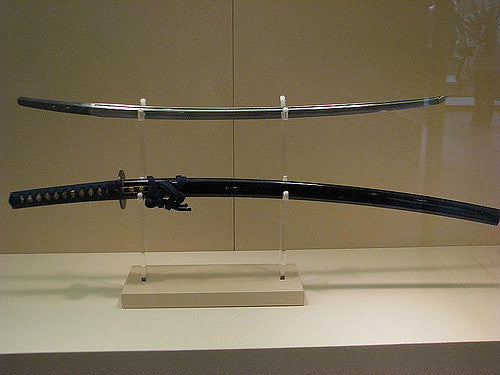Votre panier est vide


Throughout its centuries-old history, Japan has pioneered some of the world's finest swords. However, it wasn't until the region's Kamakura Period (1185 to 1333) when the katana emerged. Featuring a curved, single-edged blade measuring about 23 5/8 to 38 3/4 inches (60 to 73 cm), it was the preferred sword wielded and used by samurai warriors in feudal Japan. There were dozens of other swords available at this time, however. So, why did the majority of samurai warriors in feudal Japan prefer the katana?
Curved Blade Allows for Faster Drawing
One of the reasons so many samurai warriors used the katana is because of the sword's curved blade. With its moderately curved blade, samurai warriors could unsheathe their katana and use it to attack an opponent in a single, fluid motion. This was important because warfare during feudal Japan shifted from open-combat to close-combat environments. Using the katana, samurai warriors had a competitive advantage over their opponents by being able to quickly draw their sword.
Worn With Cutting Edge Up
When looking at photos of traditional Japanese samurai carrying a katana, you'll probably discover that most if not all samurai warriors wore this sword with the cutting edge facing up. This is in stark contrast to nearly all other swords, which are traditionally worn with the cutting edge facing down. Wearing the katana with the cutting edge facing up further improved the draw time, allowing samurai to quickly draw the sword.
Superior Blade Strength
It's also worth mentioning that the katana's blade was exceptionally stronger than the blades of other swords. Japanese bladesmiths discovered that using high-carbon steel, known as tamahagane steel, resulted in a stronger blade. It wasn't long before nearly all katanas were forged with tamahagane steel. As a result, this traditional Japanese sword was able to withstand more force and pressure without succumbing to damage.
Razor-Sharp Edge
Finally, the katana had a razor-sharp edge that was pivotal in allowing samurai warriors to engage their opponents on the battlefield. After forging a new katana, the bladesmith would pass the newly created sword down to someone else whose sole job was to sharpen it. This was a long and tedious process that involved rubbing river stones across the blade's edge. In some cases, it would take weeks or even months to fully sharpen and polish a katana. The end result, however, was a sword with a razor-sharp edge that could easily cut through hard-boiled leather armor.